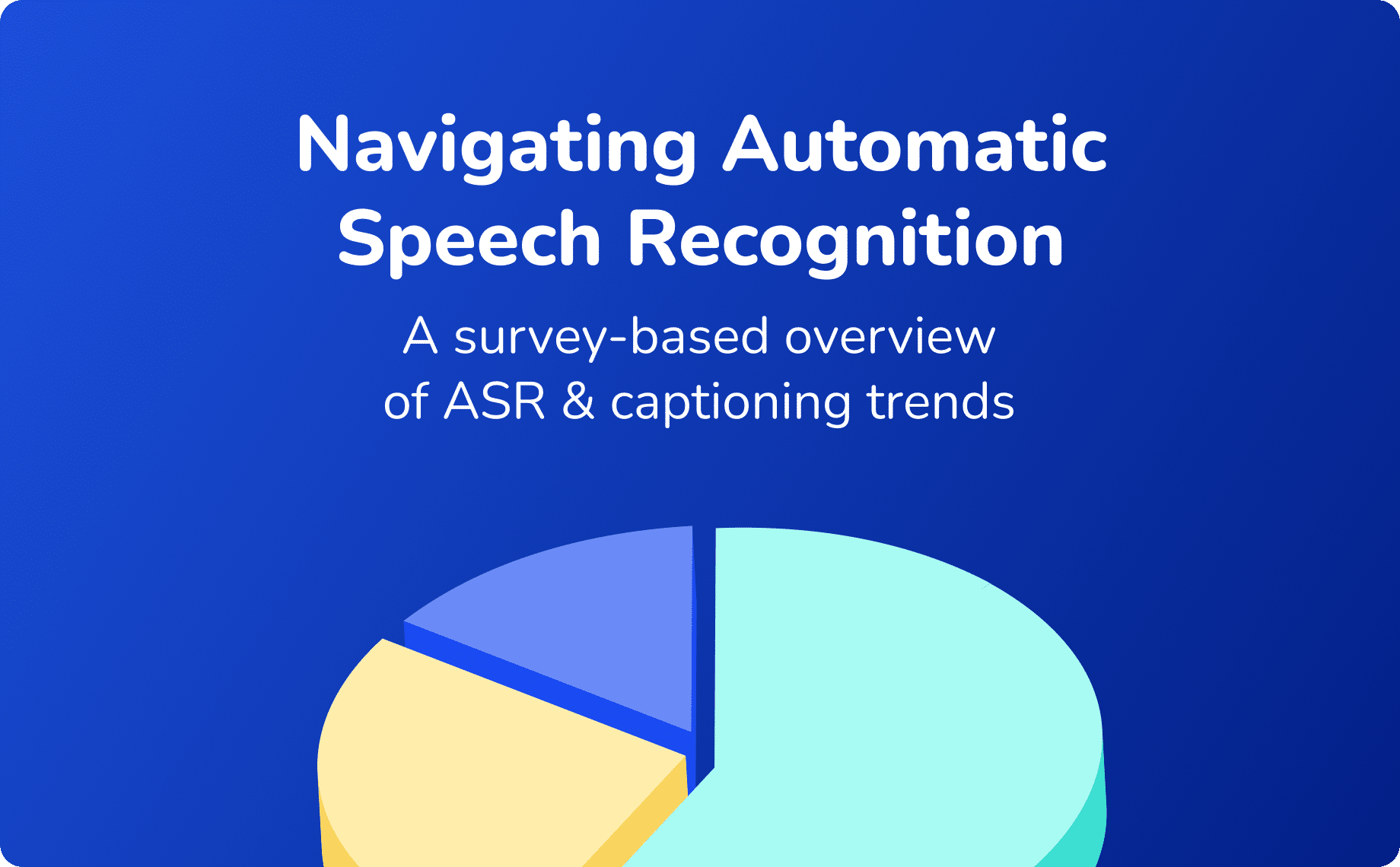COVID-19 became a true turning point for higher education with over 1.6 billion learners affected. 91 percent of those enrolled learners have been affected and they’re representative of 191 different countrywide closures. This reality has forced leaders and institutions to globalize higher education.
“With the pandemic forcing millions of instructors and students abruptly into remote schooling, many have questioned the quality of online learning and its effectiveness, especially those new to the online setting,” said JP Moran, Global Head of Channels & Coursera for Campus Americas.
Verbit recently hosted Moran of Coursera for Campus for a virtual event with higher-ed leaders to explore the global learning ecosystem and this new landscape live. Coursera encompasses over 200 industry and university partners that create market line content with them. Its leaders are helping these partners by exploring what drives the most successful online courses and why.
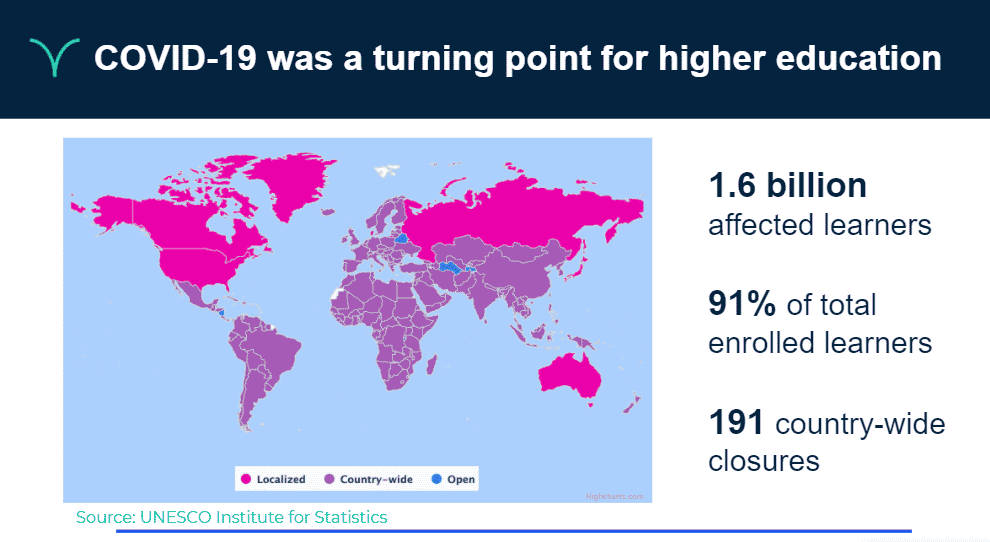
Coursera has over 6,400 institutions transforming skills with the Coursera platform for over 72 million learners. Coursera for Campus, is designed specifically for colleges and universities. Since the fall of 2019, Coursera for Campus has been serving roughly 3,700 campuses worldwide, including 2.4 million campus learners.
Moran said Coursera pulled trends based on insights from over 200 million course enrollments. The platform’s leaders produced a quality and online learning report to provide actionable recommendations to help improve the digital learning experience.
Some key stats uncovered include:
- Hands-on projects can drive 30 percent higher rates of skill development.
- Keeping lectures under 10 minutes will increase lecture completion rates by 16 percent.
- Learners who participate in discussion forums early on at the beginning of classes are 25 percent more likely to complete that course.
Additionally, Moran said that 70 percent of Coursera’s content is being consumed on a mobile or tablet type device.
“A challenge in higher ed today is that almost 47% percent of US higher ed had no formal online programs for 2018, which put us behind the curve when we ran up against COVID,” he said. “Take a step further, less than 50 percent of the faculty have actually taught online courses, which really encumbered their position to be successful through the pandemic.”
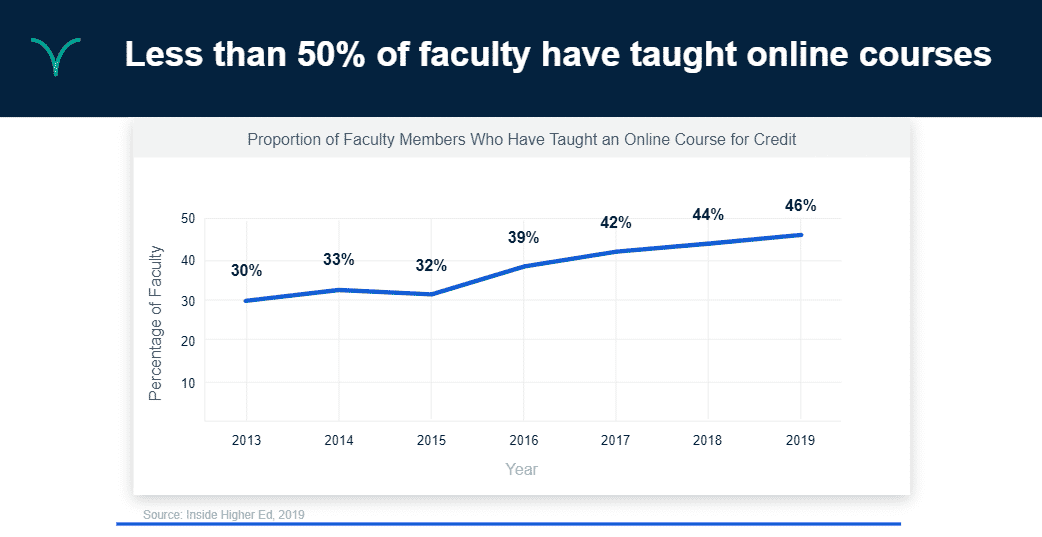
The skills gap problem
Moran also noted that there’s a significant skills gap issue in preparing students to enter the workforce and gain employment.
“It’s apparent that there’s also a communication issue and understanding gap between higher ed and employers not actively communicating enough and collaborating with one another. Even skills such as critical thinking have different meanings in academia versus corporate environments,” he said.
Only 34 percent of US college students feel prepared to enter into the workforce, or almost half of those employers blame higher education for the skills gap, Moran furthered.
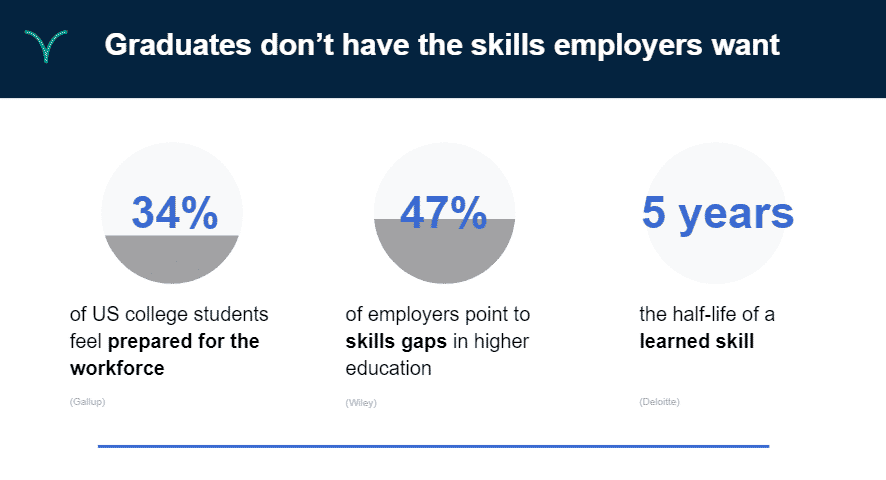
Five major issues that Coursera’s leaders are seeing
Coursera leaders are recognizing some common threads and trends across higher education currently, including:
- Student employability
- Cost management
- Capacity issues
- Faculty development
- Innovation inside the space
Moran and his team are working with universities to help them manage these challenges and create more opportunities to serve learners long-term.
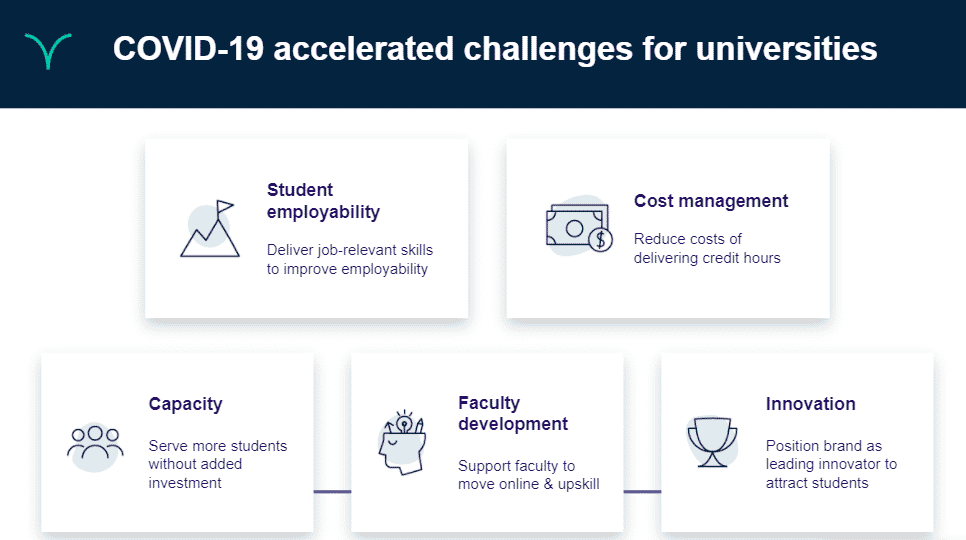
Accessibility is also a big ‘going online’ issue to address
When quickly shifting courses to online and trying to post videos quickly, accessibility measures can often fall to the wayside. Coursera is instead working strategically with Verbit to provide different forms of accessibility to users of its platform.
“We’ve worked with Verbit to provide different forms of accessibility,” Moran said. “There’s different definitions and we’re conscious of that, but when we design things on our platform, we’re equalizing access to information, hopefully to everybody. We’re building products to meet and exceed ADA standards and that’s important to both Coursera and Verbit.”
Moran said Coursera’s staff strives to hold itself accountable to the highest accessibility standards and continues to train and test against those standards. Some of these initiatives include working to ensure captions and transcription are provided to online learners on videos they’re consuming to meet these ADA guidelines.
“It’s one of the top things on our list – to make sure that we are providing access to everyone across all mediums,” he said.
Watch this video to hear more from the event where JP Moran spoke live.




